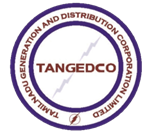Solar Rooftop System
A rooftop photovoltaic power station or rooftop PV system, is a photovoltaic system that has its electricity –generating solar panels mounted on the rooftop of buildings of residential/ commercial/ industrial /education etc.
Conventional energy sources like coal, oil, natural gas, etc., are limited in quantity, and if these continue to be depleted at the present rate, these will be exhausted in the coming decades. Energy demand is resulting in the creation of fossil fuel based power plants leading to substantial green house gas emissions having an adverse impact on global warming and climate change.
Solar energy offers a clean, climate-friendly, abundant and inexhaustible energy resource to mankind. The costs of solar energy have been falling rapidly and are entering new areas of competitiveness. Solar Thermal Electricity (STE) and Solar Photo Voltaic Electricity (SPV) are becoming competitive against conventional electricity generation in tropical countries. Rooftop SPV in tropical countries can compete with high retail electricity prices. Solar Power installations worldwide are growing rapidly .
The power generated by each individual household, industrial building, commercial building or any other type of building can be used to partly fulfill the requirement of the building occupants and surplus, if any, can be fed into the grid. The roof-top SPV systems on building’s roof space can be installed to replace DG gensets for operation during load shedding.
The price of power generated from solar plants installed today is at par with or lower than the commercial tariff for consumers. in grid connected rooftop or small SPV system, the DC power generated from SPV panel is converted to AC power using power conditioning unit and is fed to the grid on 440/220 Volt three/single phase line depending on the capacity of the system.
Knowing the importance of promoting solar power, the Government of India has launched the Jawaharlal Nehru National Solar Mission (JNNSM) under the National Action Plan for Climate Change (NAPCC). The goal of the Mission is to provide tariff subsidies to increase scale and drive down costs to grid parity for achieving a target of 22,000 MW by 2022 in a phased manner. India has also fixed a self imposed renewable energy obligation with a separate solar energy obligation.
The Government of India and the Government of Tamil Nadu have put in place various policies and mechanisms to promote solar energy, including financial incentives for certain categories of users. The Government of India has set a target of 100,000 MW of solar energy capacity for 2022 of which 40% ( 40,000 MW) is to come from the consumer category in the form of rooftop and similar small scale solar energy systems.
The Government of Tamil Nadu had notified the Tamil Nadu Solar Energy Policy, 2012 in October 2012 which included solar net metering for consumer Solar Photo Voltaic systems. This early adoption of net metering contributed to making the State a national leader in solar energy.
Vision Tamil Nadu 2023, a strategic Plan for Infrastructure Development in Tamil Nadu, includes a solar energy target of 5,000 MW. The Ministry of New and Renewable Energy (MNRE) proposed a solar energy target for the year 2022 of 9,000 MW for Tamil Nadu during the year 2019.
With the experience gained from implementation of the Tamil Nadu Solar Energy Policy, 2012 and with a view of accelerating the transition to a sustainable energy future, Tamil Nadu Solar Energy Policy, 2019 was evolved including both utility category and consumer category solar energy generation through various enabling mechanisms.
